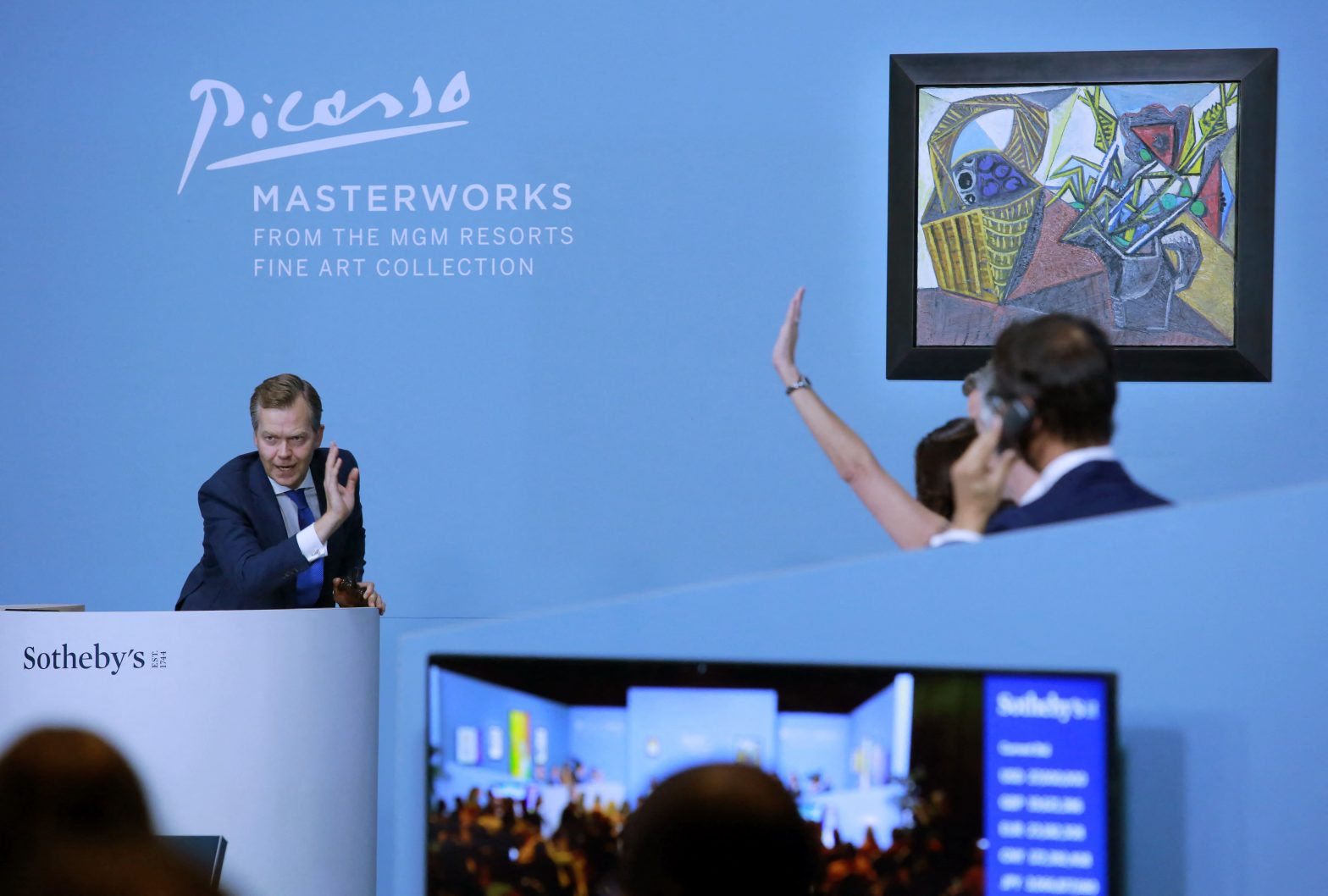Sotheby’s auctioneer Oliver Barker leads an auction of works by Pablo Picasso from the MGM Resorts Fine Art Collection on Oct. 23, 2021.
Ronda Churchill | AFP | Getty Images
Yieldstreet is launching a fund to allow retail investors to buy into a portfolio of artworks, aiming to capitalize on the soaring prices and demand for fine art.
The fund is the latest in a series of start-ups and new businesses that allow consumers to invest in art and collectibles by buying small ownership stakes. While art investment funds have been around for decades, the new generation of funds use advanced databases, digital platforms and artificial intelligence to better buy and sell works that will gain value. Masterworks, which securitizes individual paintings and allows investors to buy shares for $20, recently announced a funding round at a valuation of $1 billion.
Yieldstreet announced Friday the launch of The Art Equity Platform, a series of funds that will each hold a portfolio of works by major postwar and contemporary artists. The first fund, which will likely be under $10 million, will include works by George Condo, Keith Haring and Kenny Scharf. Future funds will partner with art experts to offer a range of periods and genres, the company said.
Yieldstreet, which offers retail investors the chance to invest in a range of assets usually reserved for the wealthy, owns Athena Art Finance, which makes art loans and advises Yieldstreet on its art investment funds. Yieldstreet said it will use its years of proprietary data and research from Athena to identify the best works by the top artists likely to see higher prices.
The funds will aim for returns of between 15% and 17%, net of fees, according to Rebecca Fine, managing director and head of art finance at Yieldstreet and Athena Art Finance. The minimum investment in the fund will be $10,000. The holding period will be for five years, with two one-year extensions.
“We have developed so much conviction and confidence in our lending model, that this is the organic next step in the segment,” Fine said.
The challenge for art funds will be whether they can reliably earn profits in a market that’s notoriously illiquid, opaque and cyclical. Over the past decade, many indexes that measure art prices have beaten the S&P 500. Yet while low interest rates, massive wealth creation during the pandemic and the rise of young collectors have fueled a recent art boom, it’s unclear how long it will last.
Most collectors also prefer to buy art to put it on their walls rather than simply buying for profits. Fine said that while the details are still in development, the company is planning events where investors can view the artworks and learn more about collecting from art experts and artists.
“The experiential aspect will be a big part of the platform,” Fine said. “Ideally we’re hoping to inspire them to not just invest, but buy physical art and build more of their own collection.”
